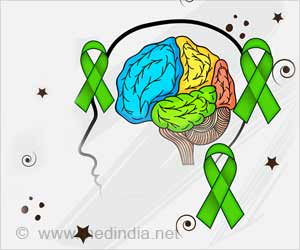New study has identified brain circuitry differences that might be linked to suicidal behavior in individuals with mood disorders.

‘Suicide rates are growing steadily among young adults, especially those with mood disorders such as depression.
’
Read More..




"At present, we have very few tools to identify individuals who may be at high risk for suicide-related behavior," said Scott Langenecker, professor of psychiatry at U of U Health and senior author on the study. "Right now, we go on self-report and clinician judgment. Those are good, but they're not great."Read More..
Previous studies have identified brain circuits associated with mood disorders: the cognitive control network (CCN), which is involved in executive function, problem-solving and impulsivity; the salience and emotional network (SEN), which is involved in emotion processing and regulation; and the default mode network (DMN), which is active when individuals are engaged in self-focused thought. However, these studies have focused primarily on depression.
"This is one of the first studies to try to understand brain mechanisms that may be relevant to suicide risk," said Jonathan Stange, assistant professor of psychiatry at UIC and first author on the study.
The Psychological Medicine study used resting-state functional MRI (fMRI), which captured brain images while participants were rested and calm, to assess the connectivity of these circuits in 212 young adults at UIC and the University of Michigan.
"For risk factors involved in suicide, the tasks we have to measure are pretty nonspecific and inexact," Langenecker said. "If we go to the level of the resting-state networks, we're actually asking the brain to tell us which brain networks and connections are most relevant." The study population included individuals with mood disorders and a history of suicide attempts, those with mood disorders and a history of suicidal thoughts, those with mood disorders and no history of suicidal behavior or thoughts, and healthy controls. All study participants with mood disorders were in remission.
Advertisement
These differences could present a target for treatment, for example, with neuromodulatory approaches. "If we could figure out how to improve connectivity within this brain circuit, we might be able to reduce suicide risk in the future," Stange said.
Advertisement
A longitudinal study, where researchers measure brain circuits at the start, then check with participants regularly to see how they are doing, will provide a better idea of which risk factors to monitor clinically, and when to intervene.
"Ultimately, that's what we really care about," Stange said. "It's not just figuring out what happened in the past, but what can we do with this information to try to prevent suicide from happening."
Source-Eurekalert















